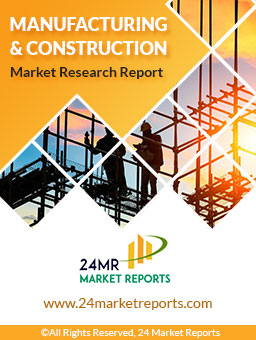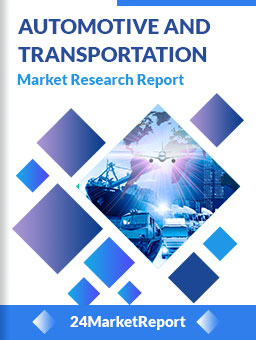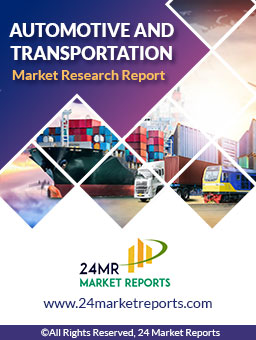
Download FREE Report Sample
Download Free sampleMARKET INSIGHTS
Global Railcar Vehicle Toilet market size was valued at USD 489 million in 2024. The market is projected to grow from USD 505 million in 2025 to USD 604 million by 2032, exhibiting a CAGR of 3.1% during the forecast period.
Railcar vehicle toilets are specialized sanitation systems designed for railway applications, including vacuum toilet systems, pressured water flushing systems, and integrated WC modules. These systems incorporate sewage tanks, water tanks, and advanced waste management components to meet strict railway hygiene standards. The technology is primarily deployed in passenger coaches, high-speed trains, EMUs (Electric Multiple Units), and locomotive cabs.
The market growth is driven by increasing railway infrastructure investments globally and stricter regulations regarding onboard sanitation. Asia Pacific dominates with 50% market share due to massive high-speed rail expansion in China, while vacuum toilet systems account for over 90% of product demand because of their water efficiency. However, retrofit projects in mature markets like Europe present significant growth opportunities, though supply chain complexities for specialized components remain a challenge.
Expansion of Global Rail Infrastructure to Fuel Demand for Railcar Toilets
The rail industry is experiencing significant growth with continued investments in rail infrastructure development worldwide. Over 15,000 km of new high-speed rail lines are currently under construction globally, predominantly in Asia Pacific and Europe. These modern rail projects prioritize passenger comfort, creating substantial demand for advanced toilet systems. Vacuum toilet systems, which dominate over 90% of the railcar toilet market, offer superior sanitation while reducing water consumption by up to 80% compared to traditional systems. Rail operators increasingly specify these solutions to meet both passenger expectations and environmental regulations.
Stringent Sanitation Regulations Accelerate Toilet System Upgrades
To know more about market statistics, Download a FREE Sample copy
Global health authorities have implemented stricter sanitation standards for public transportation following recent health crises. The rail sector faces mounting pressure to modernize onboard facilities, particularly in high-traffic commuter and long-distance routes. Retrofit projects now account for nearly 30% of railcar toilet installations as operators replace outdated pressurized systems with modern vacuum technology. This transition is particularly evident in European markets where rail networks are undertaking comprehensive fleet modernization programs with budgets exceeding €500 million annually for passenger car upgrades.
Manufacturers are responding with innovative solutions that combine hygiene features with improved maintenance access. For example, self-cleaning surfaces and touchless operation capabilities are becoming standard in new system designs. These technological advancements align perfectly with operator needs for reduced service intervals and improved cleanliness.
High Installation Costs and Retrofitting Challenges Limit Market Penetration
While vacuum toilet systems offer long-term operational benefits, their initial installation costs remain 40-60% higher than conventional systems. This creates significant barriers for railway operators in developing regions and budget-constrained transit authorities. Retrofitting older railcars presents additional engineering challenges as structural modifications often require specialized expertise. Smaller regional rail networks frequently defer toilet system upgrades due to these financial and technical hurdles, opting instead for partial refurbishments of existing systems.
The complex certification process for new toilet systems further constrains market growth. Each rail operator maintains unique specifications, requiring manufacturers to navigate varying regulatory environments across different regions. Approval timelines can extend beyond 18 months for new system designs, delaying product launches and market entry.
Emerging Smart Toilet Technologies Create New Revenue Streams
The integration of IoT capabilities in railcar toilets presents transformative opportunities for the market. Predictive maintenance systems using sensor networks can reduce service costs by up to 35% while minimizing operational disruptions. Leading manufacturers are developing connected toilet systems that monitor usage patterns, chemical levels, and system health in real-time. These innovations are particularly valuable for high-speed rail operators where minimizing downtime is critical.
There is growing interest in waterless toilet technologies as environmental concerns intensify. Several European manufacturers have piloted innovative decomposition systems that eliminate water usage entirely while meeting rigorous sanitation standards. These developments could redefine market expectations and create new product categories, especially in water-scarce regions.
Supply Chain Disruptions Impact Manufacturing Lead Times
The railcar toilet market faces persistent supply chain vulnerabilities, particularly for specialized components like vacuum pumps and marine-grade stainless steel tanks. Lead times for critical parts have extended from 8-12 weeks to 20+ weeks in recent years, disrupting production schedules. Manufacturers report that approximately 15-20% of orders now experience delays due to component shortages, eroding customer satisfaction and revenue projections.
Labor shortages in skilled welding and precision manufacturing further compound these challenges. The industry requires specialized technicians capable of working with rail-specific materials and tolerances, yet training programs have failed to keep pace with demand. This skills gap is particularly acute in North America and Europe, where an aging workforce compounds recruitment difficulties.
Vacuum Toilet Systems Segment Dominates Due to High Efficiency and Environmental Compliance
The market is segmented based on type into:
Vacuum Toilet Systems
Subtypes: Full vacuum, Vacuum-assisted, and others
Pressured Water Flushing Toilet Systems
Chemical Toilet Systems
Composting Toilet Systems
Passenger Cars Segment Leads With High Adoption in Rail Transportation
The market is segmented based on application into:
Passenger Cars
Subtypes: High-speed trains, Metro rail, Commuter rail, and others
Freight Cars
Maintenance Vehicles
Smart Toilet Systems Gaining Traction With IoT Integration
The market is segmented based on technology into:
Conventional Systems
Smart Toilet Systems
Features: Automated flushing, Self-cleaning, Water monitoring
Stainless Steel Segment Preferred for Durability and Hygiene
The market is segmented based on material into:
Stainless Steel
Composite Materials
Plastic
Others
Market Leaders Focus on Technological Advancements to Secure Competitive Edge
The global railcar vehicle toilet market exhibits a semi-consolidated structure, dominated by a mix of multinational corporations and regional specialists. WABTEC Corporation emerges as the clear market leader, commanding approximately 30% global market share in 2024. This dominance stems from their comprehensive product portfolio featuring vacuum toilet systems and complete sanitation solutions for high-speed rail applications across Europe, North America, and Asia.
Huatie Tongda and EVAC collectively hold nearly 20% market share, with their strong position in the Asia-Pacific and European markets respectively. These companies differentiate themselves through specialized water-saving technologies and modular toilet systems that meet stringent rail industry hygiene standards while reducing maintenance requirements.
Recent strategic developments indicate that leading manufacturers are focusing on three key competitive strategies: modular product designs for easier installation and maintenance, water conservation technologies to reduce operational costs, and smart sanitation solutions with IoT-enabled monitoring capabilities. WABTEC's recent launch of their Gen 4 vacuum toilet system with 40% reduced water consumption exemplifies this trend.
Meanwhile, regional players like Qingdao Victall Railway and Rolen Technologies & Products are gaining traction through competitive pricing and rapid customization capabilities for local rail operators. The Chinese market in particular shows increasing preference for domestic suppliers due to faster service response times and knowledge of local rail specifications.
WABTEC Corporation (U.S.)
Huatie Tongda (China)
EVAC Group (Finland)
Rolen Technologies & Products (Germany)
Qingdao Victall Railway (China)
Goko Seisakusho (Japan)
Dowaldwerke (Germany)
Zhuzhou CRRC Times Electric (China)
Glova Rails (Spain)
VKV Praha (Czech Republic)
The railcar vehicle toilet market is witnessing significant traction with vacuum toilet systems leading the segment, accounting for over 90% of market share in 2024. These systems are preferred due to their water efficiency, lower maintenance costs, and environmental benefits compared to traditional flushing toilets. Recent technological advancements have further enhanced vacuum toilets with features like automated waste disposal, reduced odor, and improved hygiene standards. The adoption of such systems is particularly high in modern passenger coaches and high-speed trains, where space optimization and sanitation are critical. Furthermore, stringent government regulations on water conservation in rail transport are accelerating the shift toward vacuum-based solutions.
Sustainability-Driven Retrofitting Projects
The demand for railcar vehicle toilets is also being bolstered by retrofit projects aimed at modernizing aging fleets. Rail operators across Europe and North America are investing in eco-friendly sanitation solutions to comply with sustainability targets. For instance, pressurized water flushing systems—though holding a smaller market share—are being phased out in favor of vacuum-based alternatives due to their higher water consumption. The retrofitting trend is particularly pronounced in developed regions, with an estimated 15-20% of annual sales attributed to fleet upgrades. Emerging markets in Asia Pacific are also embracing this shift, driven by urbanization and government initiatives to improve rail infrastructure.
Asia Pacific dominates the global railcar vehicle toilet market, contributing nearly 50% of total revenue in 2024. This growth is fueled by massive high-speed rail expansion projects in China, India, and Southeast Asia, supported by governmental investments exceeding $500 billion collectively. China’s CRRC, the world’s largest rolling stock manufacturer, has been a key driver, integrating advanced toilet systems in its next-generation trains. While the region’s passenger car segment accounts for 90% of toilet installations, freight applications remain niche. Competition is intensifying as local players like Huatie Tongda challenge global leaders such as WABTEC through cost-efficient solutions tailored for regional requirements.
North America
The North American railcar vehicle toilet market is characterized by high adoption of vacuum toilet systems, which account for over 90% of installations. This dominance is driven by stringent sanitation regulations from organizations like the FDA and FRA, coupled with major rail operators prioritizing passenger comfort. The U.S. leads regional growth, with Amtrak's fleet modernization program investing $7.3 billion in new railcars, many featuring advanced sanitation systems. However, market expansion faces headwinds from the region's aging rail infrastructure and the high costs associated with retrofitting older vehicles with modern toilet solutions.
Europe
Europe maintains the world's second-largest market share (30%) through a combination of regulatory mandates and technological innovation. The EU's TSI (Technical Specifications for Interoperability) standards mandate strict hygiene and water conservation requirements, pushing adoption of water-efficient vacuum toilets across high-speed networks like TGV and ICE. Germany and France spearhead development, with manufacturers like EVAC and Dowaldwerke supplying cutting-edge systems featuring closed-loop waste treatment. While Western Europe shows maturity, Eastern European markets present growth potential as they upgrade Soviet-era rolling stock, though budget constraints slow progress.
Asia-Pacific
Accounting for 50% of global demand, APAC's market thrives on massive rail expansion projects. China's CRRC dominates production, installing over 100,000 toilet units annually across its high-speed rail network. India's ambitious Vande Bharat Express program prioritizes bio-vacuum toilets to address public hygiene concerns. Regional growth stems from urbanization pressures requiring higher passenger capacities, though cost sensitivity leads many operators to prefer basic pressurized systems over premium vacuum alternatives. Japan remains the technology leader, with innovations in odor control and space-saving designs influencing global standards.
South America
This emerging market shows fragmented growth, with Brazil investing in rail infrastructure ahead of the 2027 Ferroviário Centenário initiative. Most new passenger coaches incorporate basic vacuum toilets to comply with ANTT transportation guidelines, but retrofitting older freight-oriented networks proves challenging. Argentina's Belgrano Cargas modernization includes limited toilet upgrades, reflecting the region's prioritization of freight over passenger rail development. Economic instability and currency fluctuations hinder large-scale investments, keeping adoption rates below global averages despite clear infrastructure needs.
Middle East & Africa
Gulf Cooperation Council (GCC) nations drive regional demand through luxury rail projects like Saudi Arabia's Riyadh Metro, equipping trains with premium sanitation systems. North African countries like Egypt and Morocco are gradually upgrading commuter rail networks with basic toilet facilities, though water scarcity limits pressurized system adoption. Sub-Saharan Africa shows minimal market penetration due to underdeveloped rail infrastructure, with few passenger services offering onboard sanitation. However, China's Belt and Road investments may stimulate future growth through rail modernization projects across Ethiopia, Kenya, and Nigeria.
This market research report offers a holistic overview of global and regional markets for the forecast period 2025–2032. It presents accurate and actionable insights based on a blend of primary and secondary research.
✅ Market Overview
Global and regional market size (historical & forecast)
Growth trends and value/volume projections
✅ Segmentation Analysis
By product type or category
By application or usage area
By end-user industry
By distribution channel (if applicable)
✅ Regional Insights
North America, Europe, Asia-Pacific, Latin America, Middle East & Africa
Country-level data for key markets
✅ Competitive Landscape
Company profiles and market share analysis
Key strategies: M&A, partnerships, expansions
Product portfolio and pricing strategies
✅ Technology & Innovation
Emerging technologies and R&D trends
Automation, digitalization, sustainability initiatives
Impact of AI, IoT, or other disruptors (where applicable)
✅ Market Dynamics
Key drivers supporting market growth
Restraints and potential risk factors
Supply chain trends and challenges
✅ Opportunities & Recommendations
High-growth segments
Investment hotspots
Strategic suggestions for stakeholders
✅ Stakeholder Insights
Target audience includes manufacturers, suppliers, distributors, investors, regulators, and policymakers
-> Key players include WABTEC, Huatie Tongda, EVAC, Rolen Technologies & Products, Qingdao Victall Railway, and Goko Seisakusho, among others. The top 3 companies hold approximately 50% market share.
-> Key growth drivers include expansion of railway infrastructure, increasing passenger rail traffic, and modernization of aging rail fleets. The growing demand for high-speed trains is particularly significant.
-> Asia-Pacific dominates with about 50% market share, followed by Europe (30%) and North America (15%). China's extensive high-speed rail network contributes significantly to APAC's leadership.
-> Emerging trends include waterless vacuum toilet systems, IoT-enabled maintenance monitoring, and sustainable waste management solutions for rail vehicles. Manufacturers are focusing on space-efficient designs for modern trains.
-> Vacuum toilet systems dominate with over 90% market share, while pressured water flushing systems account for the remainder. Vacuum systems are preferred for their water efficiency and reduced maintenance.
-> Passenger cars represent about 90% of the market, as freight cars typically don't require toilet facilities. The segment is driven by increasing rail passenger traffic globally.

Speak to our Custom Research Team and get the Custom Research in a budget
Custom ResearchFrequently Asked Questions ?
A license granted to one user. Rules or conditions might be applied for e.g. the use of electric files (PDFs) or printings, depending on product.
A license granted to multiple users.
A license granted to a single business site/establishment.
A license granted to all employees within organisation access to the product.
Upto Working 24 to 48 hrs
Upto 72 hrs max - Weekends and Public Holidays
Online Payments with PayPal and CCavenue
Wire Transfer/Bank Transfer
Hard Copy




 Industry Market Size
Industry Market Size SWOT Analysis
SWOT Analysis Industry Major Players
Industry Major Players Revenue Forecasts
Revenue Forecasts Historical and Forecast Growth
Historical and Forecast Growth Profitability Analysis
Profitability Analysis
























